We need your consent to use the individual data so that you can see information about your interests, among other things. Click "OK" to give your consent.
ASTM D5257-11
Standard Test Method for Dissolved Hexavalent Chromium in Water by Ion Chromatography
STANDARD published on 15.3.2011
The information about the standard:
Designation standards: ASTM D5257-11
Note: WITHDRAWN
Publication date standards: 15.3.2011
SKU: NS-30479
The number of pages: 7
Approximate weight : 21 g (0.05 lbs)
Country: American technical standard
Category: Technical standards ASTM
The category - similar standards:
Annotation of standard text ASTM D5257-11 :
Keywords:
analysis, hexavalent chromium, ion chromatography, wastewater, water, Chromium content--water, Dissolved elements (of water), Hexavalent chromium testing, Ion chromatography (IC), Ion exchange chromatography, Wastewater testing/treatment, ICS Number Code 71.060.50 (Salts)
Additional information
| Significance and Use | ||||||||||||||||
|
Hexavalent chromium salts are used extensively in the metal finishing and plating industries, in the leather industry as a tanning agent, and in the manufacture of paints, dyes, explosives, and ceramics. Trivalent chromium salts are used as mordants in textile dying, in the ceramic and glass industry, and in photography. Chromium, in either oxidation state, may be present in wastewater from these industries and may also be discharged from chromate-treated cooling waters. Hexavalent chromium is toxic to humans, animals, and aquatic life. It can produce lung tumors when inhaled and readily induces skin sensitization. It is not known whether cancer will result from ingestion of chromium in any of its valence states. Ion chromatography provides a means of separating the hexavalent chromium from other species present in the sample, many of which interfere with other detection methods. The combination of this separation with a sensitive colorimetric detection method provides a selective and sensitive analytical method for hexavalent chromium with minimal sample preparation. |
||||||||||||||||
| 1. Scope | ||||||||||||||||
|
1.1 This test method covers procedures for the determination of dissolved hexavalent chromium in wastewater, surface water, and drinking water. 1.2 The precision and bias of this test method has been tested in reagent water and industrial wastewater and has been found suitable over the range of approximately 1 to 1000 μg/L. See Table 1 for details. Higher levels can be determined by appropriate dilution. 1.3 Samples containing very high levels of anionic species (that is, chloride, sulfate, etc.) may cause column overload. Samples containing high levels of reducing species (that is, sulfides, sulfites, etc.) may cause reduction of Cr(VI) to Cr(III). This can be minimized by buffering the sample to a pH of 9 to 9.5, filtering it, storing it at <6°C. aA holding time of 28 days may be used if the user can demonstrate that such holding time does not affect sample integrity per US EPA 40 CFR 136 Part II. 1.4 The values stated in either SI or inch-pound units are to be regarded as the standard. The values given in parentheses are for information only. 1.5 This standard does not purport to address all of the safety concerns, if any, associated with its use. It is the responsibility of the user of this standard to establish appropriate safety and health practices and determine the applicability of regulatory limitations prior to use. |
||||||||||||||||
| 2. Referenced Documents | ||||||||||||||||
|
Similar standards:
Historical
1.11.2008
Historical
1.1.2014
Historical
1.4.2012
Historical
1.5.2011
Historical
1.10.2009
Historical
15.12.2013
We recommend:
Technical standards updating
Do you want to make sure you use only the valid technical standards?
We can offer you a solution which will provide you a monthly overview concerning the updating of standards which you use.
Would you like to know more? Look at this page.


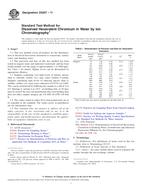
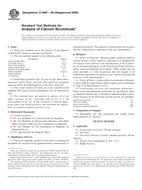 ASTM D4487-90(2008)..
ASTM D4487-90(2008)..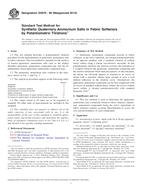 ASTM D5070-90(2014)..
ASTM D5070-90(2014)..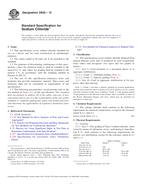 ASTM D632-12
ASTM D632-12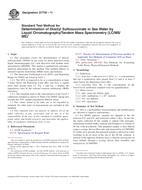 ASTM D7730-11
ASTM D7730-11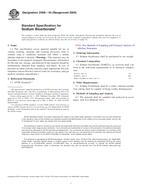 ASTM D928-03(2009)..
ASTM D928-03(2009)..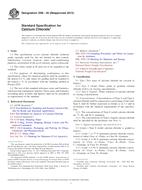 ASTM D98-05(2013)..
ASTM D98-05(2013)..
 Cookies
Cookies
